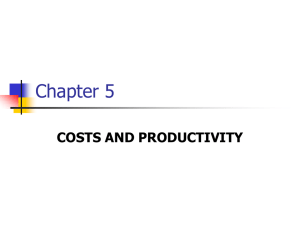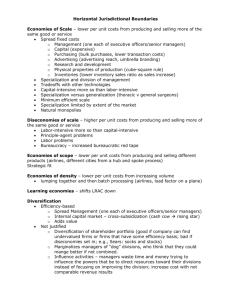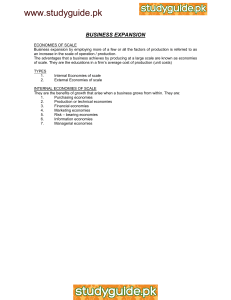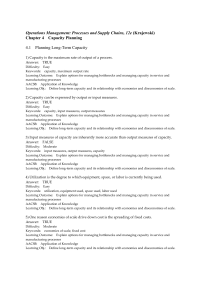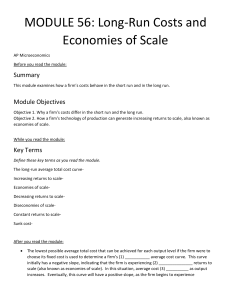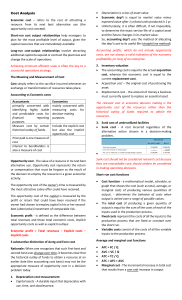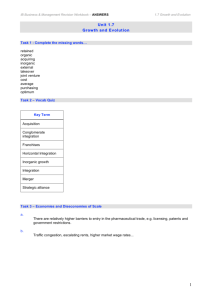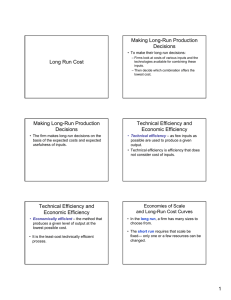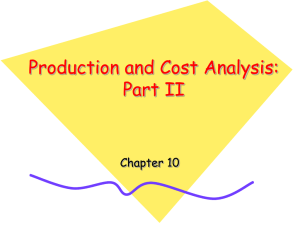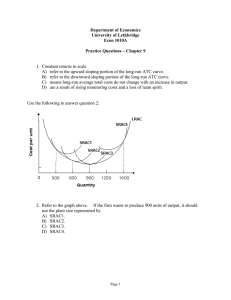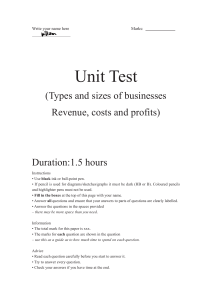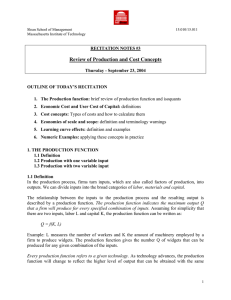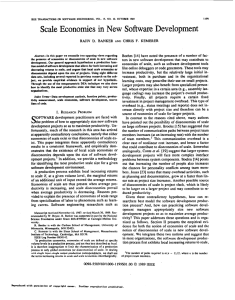LAWS OF RETURN TO SCALE The law of returns to scale describes
advertisement
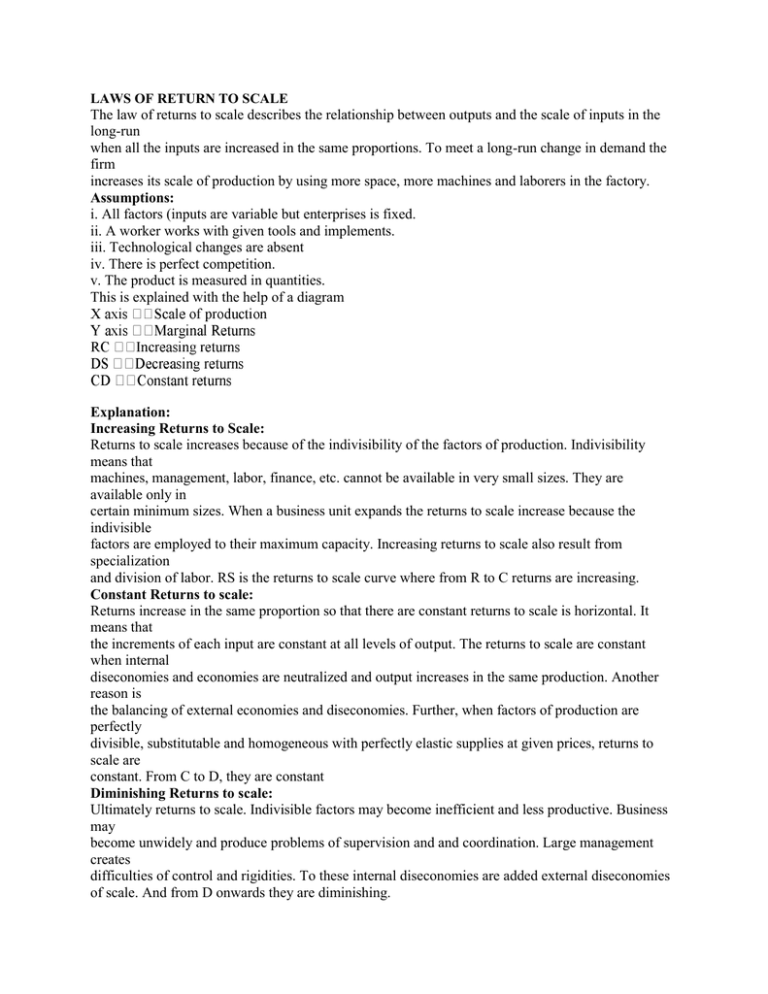
LAWS OF RETURN TO SCALE The law of returns to scale describes the relationship between outputs and the scale of inputs in the long-run when all the inputs are increased in the same proportions. To meet a long-run change in demand the firm increases its scale of production by using more space, more machines and laborers in the factory. Assumptions: i. All factors (inputs are variable but enterprises is fixed. ii. A worker works with given tools and implements. iii. Technological changes are absent iv. There is perfect competition. v. The product is measured in quantities. This is explained with the help of a diagram Explanation: Increasing Returns to Scale: Returns to scale increases because of the indivisibility of the factors of production. Indivisibility means that machines, management, labor, finance, etc. cannot be available in very small sizes. They are available only in certain minimum sizes. When a business unit expands the returns to scale increase because the indivisible factors are employed to their maximum capacity. Increasing returns to scale also result from specialization and division of labor. RS is the returns to scale curve where from R to C returns are increasing. Constant Returns to scale: Returns increase in the same proportion so that there are constant returns to scale is horizontal. It means that the increments of each input are constant at all levels of output. The returns to scale are constant when internal diseconomies and economies are neutralized and output increases in the same production. Another reason is the balancing of external economies and diseconomies. Further, when factors of production are perfectly divisible, substitutable and homogeneous with perfectly elastic supplies at given prices, returns to scale are constant. From C to D, they are constant Diminishing Returns to scale: Ultimately returns to scale. Indivisible factors may become inefficient and less productive. Business may become unwidely and produce problems of supervision and and coordination. Large management creates difficulties of control and rigidities. To these internal diseconomies are added external diseconomies of scale. And from D onwards they are diminishing.



